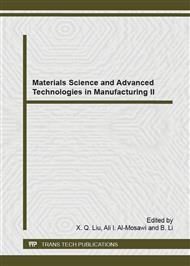p.156
p.161
p.165
p.171
p.175
p.183
p.187
p.192
p.196
Numerical Simulation for Heat Transfer of Nanofluid in a Rotating Circular Groove Using a Continuous Finite Element Scheme
Abstract:
In this paper, we investigate the heat transfer of the power-law-fluids-based nanofluids in a rotating circular groove. The circular groove rotates with a constant speed and the temperature on the wall of the groove is different from the temperature inside in the initial time. The effects of thermophoresis and Brownian are considered. The thermal conductivity of the nanofluids is taken as a constant. We solve the model with the finite element method directly and discretize them using a continuous finite element scheme in space and a modified midpoint scheme in time. From the results we can find that the heat transfer enhancement of the nanofluids increases as the power law index of the base fluid decreases.
Info:
Periodical:
Pages:
175-179
Citation:
Online since:
December 2014
Authors:
Price:
Сopyright:
© 2015 Trans Tech Publications Ltd. All Rights Reserved
Share:
Citation:


